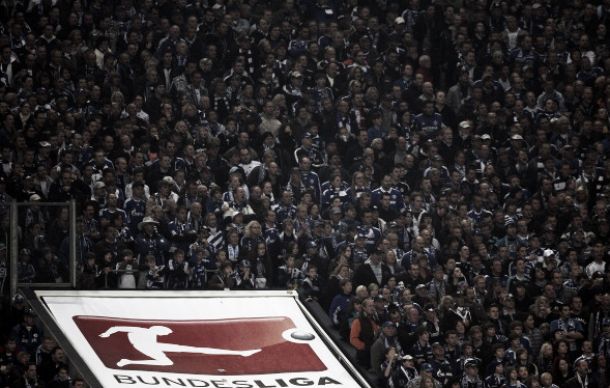Another record breaking year for the Bundesliga as they achieved record revenues for the tenth year in a row, in the season of 2013/14.
At EUR 2.45 billion, revenues were up 12.9 percent over the previous year. 13 out of the 18 clubs, one more than in the previous year this was operated profitably.
On the expense side, the staff cost ratio, which expresses the proportion of player and trainer salaries in total revenues, came to 36.8 percent, i.e. significantly lower than in the previous year.
In comparison, the average Europe-wide figure stands at 65 percent according to UEFA. 2. Bundesliga also posted record revenues of EUR 458 million (up 9.2 percent over the previous year), while the staff cost ratio was also considerably less than 40 percent. With taxes and duties of more than EUR 875 million, German professional football is a major taxpayer. Over the past five years, it has paid total taxes of almost four billion euros. German professional football is also a significant employer. During the 2013/14 season, 48,830 people (8 percent more than in the previous year) were employed either directly or were contracted by the licensed clubs.
“Over the last few years, professional football in Germany has used its solid financial foundations to achieve outstanding sporting results. Looking forward, the outlook remains upbeat as Bundesliga’s economic growth is continuing unabated. This will form the basis for the clubs’ future performance and allow them to finance the manifold activities which they carry out for the good of society as a whole,” says Christian Seifert, CEO Bundesliga.
Key Facts of the report:
- Professional football in Germany is an employer of 48,830 people. 17,228 are directly employed by the 36 clubs from the Bundesliga and Bundesliga 2 or by their subsidiaries.
- In addition to this, 31,602 people are indirectly employed in the running of the league, for example: security employees, catering firms and cleaning services.
- Matches involving German professional football clubs can be watched in 208 of the 209 FIFA member territories.
- The main income from rights marketing continues to come from Germany. However, the marketing of broadcasting rights abroad has led to already more than 70 million euros being earned, and this figure is increasing - in 2015/16, the marketing of international media rights will grow to over 150 million euros.
- Since 2002, approximately 940 million euros have flowed into the creation of centres of excellence from the 36 professional clubs. In the 2013/14 season, expenditure in this area was 120.15 million euros.
- Clubs want to continue to ensure the quality of professional football in Germany: build modern stadia, sign top players and continue to nurture talented young players. This in one way is financed by the revenue from the marketing of media rights.
- Up to and including the 2016/17 season, approximately 2.5 billion euros will be distributed to the 36 professional football clubs out of the central marketing of national media rights.
- Revenue from this marketing in Germany is allocated in a proportion of 80 per cent to the Bundesliga clubs and 20 per cent to the Bundesliga 2 clubs. The money is distributed to the 36 clubs according to criteria which takes into consideration the final placings over the course of the previous five seasons, with a greater weighting to the more recent campaign, reducing accordingly.
Full Report: http://static.bundesliga.com/media/native/autosync/gb_dfl_bl_report_2015_150dpi.pdf (Credit: Bundesliga.com)










































